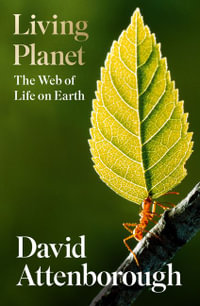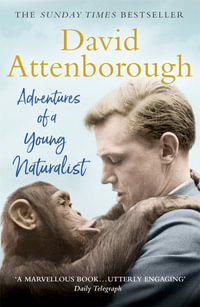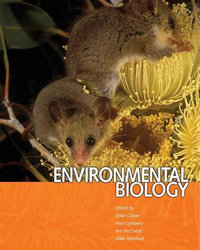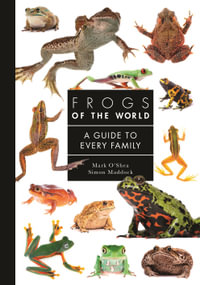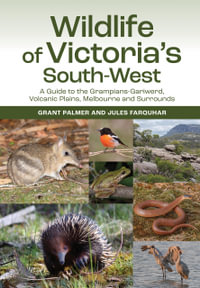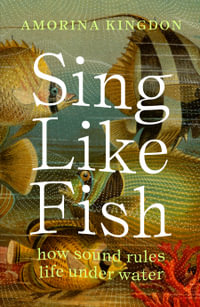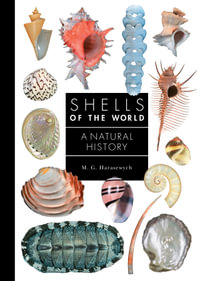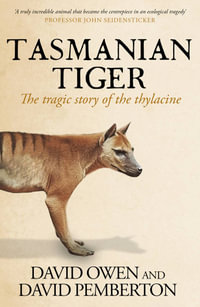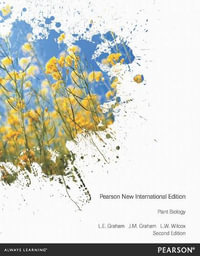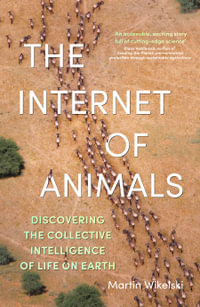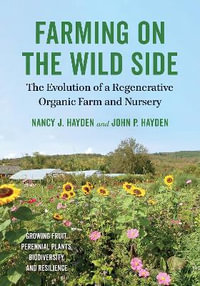| The Tectonic and Geological Environment of Coastal South America | p. 1 |
| Introduction | p. 1 |
| The Atlantic Continental Margin | p. 1 |
| Physiographic Features | p. 1 |
| Structural and Stratigraphic Evolution | p. 4 |
| The Andean Margin | p. 6 |
| Geomorphology and Active Tectonics | p. 6 |
| Tectonic History | p. 9 |
| The North Andean and Caribbean Margins | p. 10 |
| Geomorphology and Active Tectonics | p. 10 |
| Tectonic History | p. 11 |
| The Gulf of Honduras | p. 17 |
| Introduction | p. 17 |
| Hydrometeorology and Oceanography | p. 18 |
| Habitats, Diversity, and Productivity | p. 21 |
| Coastal Lagoons | p. 22 |
| Coastal Embayments | p. 23 |
| Inner Cays | p. 24 |
| Mid Lagoon Cays | p. 25 |
| Barrier Reef | p. 25 |
| Open Ocean Environment | p. 26 |
| Land Use and Economic Activities | p. 26 |
| Marine-Protected Areas | p. 28 |
| Integrated Coastal Zone Management | p. 29 |
| References | p. 31 |
| The Coastal Lagoon Ciénaga Grande De Santa Marta, Colombia | p. 33 |
| Introduction | p. 33 |
| Environmental Setting | p. 33 |
| Biotic Components | p. 36 |
| Plankton | p. 36 |
| Invertebrates | p. 36 |
| Fishes | p. 37 |
| Birds, Reptiles, and Mammals | p. 38 |
| Mangroves | p. 38 |
| Trophic Structure | p. 39 |
| Human Impact and Fisheries | p. 40 |
| Management | p. 43 |
| References | p. 44 |
| The Maracaibo System, Venezuela | p. 47 |
| Introduction | p. 47 |
| Environmental Factors | p. 47 |
| Tides and Circulation | p. 49 |
| Physico-chemical Characteristics | p. 50 |
| Nutrients | p. 51 |
| Biological Components | p. 51 |
| Benthic Communities | p. 51 |
| Plankton Communities | p. 53 |
| Vertebrates | p. 54 |
| Production Processes | p. 55 |
| Environmental Issues | p. 56 |
| Management Considerations | p. 58 |
| References | p. 59 |
| The Orinoco River Delta, Venezuela | p. 61 |
| Introduction | p. 61 |
| Environmental Setting | p. 61 |
| Biological Components | p. 64 |
| Phytoplankton Community | p. 64 |
| Vegetation | p. 64 |
| Vertebrate Fauna | p. 65 |
| Human Impact and Exploitation | p. 66 |
| Management Considerations | p. 68 |
| References | p. 69 |
| The Itamaracá Estuarine Ecosystem, Brazil | p. 71 |
| Introduction | p. 71 |
| Environmental Setting | p. 71 |
| Hydrodynamics | p. 73 |
| Hydrology | p. 74 |
| Biota | p. 76 |
| Trophic Relations | p. 78 |
| Environmental Problems | p. 78 |
| References | p. 80 |
| The Abrolhos Reefs of Brazil | p. 83 |
| Introduction | p. 83 |
| Environmental Setting | p. 85 |
| Reef Organisms | p. 86 |
| Corals | p. 86 |
| Algae | p. 87 |
| Other Biota | p. 88 |
| Reef Types | p. 90 |
| Coastal Arc | p. 90 |
| Fringing Reefs of the Abrolhos Archipelago | p. 92 |
| Outer Arc | p. 93 |
| Environmental Impacts and Management | p. 93 |
| References | p. 95 |
| The Cabo Frio Upwelling System, Brazil | p. 97 |
| Introduction | p. 97 |
| Climate and Hydrology | p. 98 |
| Biological Community | p. 99 |
| Plankton | p. 99 |
| Benthos | p. 101 |
| Nekton | p. 103 |
| References | p. 104 |
| Baía de Guanabara,Rio De Janeiro, Brazil | p. 107 |
| Introduction | p. 107 |
| Geological Setting | p. 108 |
| Bathymetry and Bottom Sediment | p. 109 |
| Climate and Weather | p. 110 |
| Runoff | p. 111 |
| Tidal Variability | p. 112 |
| Salinity, Circulation and Flushing | p. 112 |
| Coastal Ecosystems | p. 113 |
| Anthropogenic Impacts | p. 114 |
| References | p. 115 |
| The Lagoon Region and Estuary Ecosystem of Cananéia, Brazil | p. 119 |
| Introduction | p. 119 |
| Environmental Setting | p. 119 |
| Biotic Components | p. 123 |
| Mangroves | p. 123 |
| Plankton Community | p. 124 |
| Benthic Community | p. 125 |
| Fish Fauna | p. 126 |
| Nutrient Cycles, Energy Flow, and Food Chains | p. 126 |
| Sustainable Development and Management Needs | p. 127 |
| References | p. 127 |
| The Subtropical Estuarine Complex of Paranaguá Bay, Brazil | p. 131 |
| Introduction | p. 131 |
| Environmental Settings | p. 131 |
| Geomorphologie Processes | p. 133 |
| Physical Characteristics | p. 133 |
| Chemical Characteristics | p. 135 |
| Biotic Components | p. 136 |
| Trophic Structure and Energy Flow | p. 140 |
| Human Impacts and Management Needs | p. 141 |
| References | p. 143 |
| The Convergence Ecosystem in the Southwest Atlantic | p. 147 |
| Introduction | p. 147 |
| Environmental Setting | p. 148 |
| Fertilization Processes | p. 149 |
| The Organisms | p. 152 |
| Plankton | p. 152 |
| Macrobenthic Invertebrates | p. 153 |
| Fishes and Cephalopods | p. 155 |
| Biological Production and Trophic Structure | p. 157 |
| Human Impacts | p. 158 |
| Fisheries | p. 158 |
| Pollution and Blooms | p. 160 |
| Management Considerations | p. 161 |
| References | p. 162 |
| The Patos Lagoon Estuary,Brazil | p. 167 |
| Introduction | p. 167 |
| Environmental Setting | p. 167 |
| Estuarine Habitats | p. 169 |
| The Water Column | p. 169 |
| Unvegetated Subtidal Soft-Bottoms and Intertidal Flats | p. 170 |
| Sea Grass Beds | p. 171 |
| Marginal Marshes | p. 172 |
| Artificial Hard Substrates | p. 173 |
| Energy Flow | p. 174 |
| Primary Production Cycles | p. 174 |
| Trophic Relations | p. 176 |
| Estuary-Coast Interactions | p. 179 |
| Impact and Management | p. 180 |
| References | p. 182 |
| The Río de la Plata Estuary,Argentina-Uruguay | p. 185 |
| Introduction | p. 185 |
| Environmental Setting | p. 186 |
| Climate | p. 186 |
| Estuarine Dynamics | p. 187 |
| Biotic Components | p. 188 |
| Freshwater Environment | p. 188 |
| Mixohaline Environment | p. 190 |
| Plankton | p. 190 |
| Benthos | p. 191 |
| Nekton | p. 192 |
| Mammals and Birds | p. 193 |
| Continental Shelf Environment | p. 193 |
| Plankton | p. 193 |
| Benthos | p. 194 |
| Nekton | p. 195 |
| Mammals | p. 195 |
| Biological Significance of the Salt Wedge Regime | p. 196 |
| Head of the Salt Wedge | p. 196 |
| Halocline and Surface Salinity Front | p. 198 |
| Human Impacts and Management Needs | p. 199 |
| References | p. 200 |
| The Bahia Bianca Estuary, Argentina | p. 205 |
| Introduction | p. 205 |
| Geomorphology | p. 205 |
| Physical Processes | p. 207 |
| Freshwater Input | p. 207 |
| Tides | p. 208 |
| Winds | p. 209 |
| Salinity and Temperature | p. 209 |
| Biological Communities | p. 211 |
| Benthos | p. 211 |
| Plankton | p. 212 |
| Nekton | p. 213 |
| Impact and Management | p. 214 |
| References | p. 215 |
| The Sand Beach Ecosystem of Chile | p. 219 |
| Introduction | p. 219 |
| Environmental Setting | p. 219 |
| Biological Components | p. 220 |
| Human Impacts | p. 225 |
| References | p. 226 |
| The Peruvian Coastal Upwelling System | p. 229 |
| Introduction | p. 229 |
| Environmental Characteristics | p. 229 |
| Currents and Winds | p. 229 |
| Coastal Upwelling | p. 231 |
| Oceanographic Features | p. 232 |
| Community Structure and Dynamics | p. 233 |
| Phytoplankton | p. 233 |
| Zooplankton | p. 234 |
| Benthic Organisms | p. 235 |
| Fishes and Other Vertebrates | p. 236 |
| El Niño Impact on the Ecosystem | p. 239 |
| Need for Cautious Management | p. 242 |
| References | p. 243 |
| The Gulf of Guayaquil and the Guayas River Estuary, Ecuador | p. 245 |
| Introduction | p. 245 |
| Environmental Setting | p. 246 |
| Biogeochemistry | p. 249 |
| Estuarine Habitats and Communities | p. 251 |
| Mangroves | p. 251 |
| Plankton | p. 253 |
| Benthos | p. 253 |
| Productivity and Trophic Structure | p. 254 |
| Coupling of Coastal and Estuarine Ecosystems | p. 257 |
| Human Impacts | p. 258 |
| Preliminary Models and Ecosystem Management | p. 259 |
| References | p. 260 |
| The Estuary Ecosystem of Buenaventura Bay, Colombia | p. 265 |
| Introduction | p. 265 |
| Environmental Settings | p. 265 |
| Coastal Habitats and Communities | p. 268 |
| Sandy Beaches | p. 268 |
| Cliffs and Rocky Shores | p. 269 |
| Mangrove Swamps | p. 270 |
| Mud Flats | p. 272 |
| Pelagic Estuarine Environment | p. 273 |
| Trophic Relations | p. 273 |
| Primary Production | p. 273 |
| Food Webs | p. 274 |
| Human Impact | p. 276 |
| Pollution | p. 277 |
| Exploitation | p. 277 |
| Management Needs | p. 278 |
| References | p. 279 |
| Eastern Pacific Coral Reef Ecosystems | p. 281 |
| Introduction | p. 281 |
| Environmental Setting | p. 282 |
| The Eastern Pacific Coral Reef Region | p. 285 |
| Ecological Processes | p. 291 |
| Nutrient Cycling, Carbon Production and Trophic Relationships | p. 295 |
| Functional Interfaces with Adjacent Biotopes | p. 297 |
| Natural and Anthropogenic Impacts | p. 297 |
| Management Needs | p. 299 |
| References | p. 303 |
| Table of Contents provided by Publisher. All Rights Reserved. |

